Welcome to Creator Columns, where we bring expert HubSpot Creator voices to the Blogs that inspire and help you grow better.
I’m the founder of an inclusive marketing strategy consultancy. As I’ve worked with clients of various sizes across industries over the years, I’ve observed that many marketers and business leaders still don’t fully understand the business benefit of inclusive marketing.
Smart brands engage in inclusive marketing because they know it helps them make a bigger impact on a broader audience while increasing sales.
While most marketers wouldn’t intentionally exclude consumers, not excluding is not the same as actively including. True inclusion, and the ability to consistently acquire new customers from underrepresented and underserved communities requires intention.
Why Smart Brands Invite Consumers With Varying Identities to be Their Customers
To illustrate, imagine you want to be friends with a new group of people, so you decide to throw a party. A good host wouldn’t just put a sign out that says “Hey, everybody come to my party.” A savvy host would actively spread the word so the new group knows they are invited.
Smart hosts who want to welcome a specific group of people ensure they get a direct invitation to the party.
And then, effective hosts ensure all the details and experience of the party are well planned out, to ensure that when the group you wanted to attend arrives at your party, they have such a wonderful time they don’t want to leave and are excited about attending the next one.
This free How to Build a Brand kit from HubSpot will help you with resources you need to create a brand that makes more of the people you serve feel like they belong with you, and crave attending more of your “brand parties.”
There are many ways brands can go about acquiring new customers. However, when it comes to consumers from underrepresented and underserved communities, I often need to remind my clients that it isn’t enough just to communicate “you are welcome here.”
Brands must intentionally invite people from these communities to be their customers because they have long been ignored and underserved by brands.
Consumers from marginalized communities are often skeptical of brands’ intentions, particularly those who suddenly start to engage after ignoring them for so long.
These consumers don’t know if a brand’s efforts are genuine, opportunistic, or short-lived, so they often keep their distance until they know that a brand is committed to serving and supporting their community
As such, as brands are working to acquire consumers from underrepresented and underserved communities, it is necessary to invite them in a manner that makes them feel seen, supported, and like they belong with you.
Here are some examples of how brands have leaned into inclusive marketing as a customer acquisition strategy for specific identities they want to serve.
Examples of Brands Leaning Into Inclusive Marketing as a Customer Acquisition Strategy
1. Walmart Supports Neurodivergent Consumers
In 2023, after listening to feedback from both customers and team members, Walmart decided to implement sensory-friendly hours each day from 8-10 AM in all their stores across the United States and Puerto Rico.
During this time frame, stores dim the lights, lower the music, and program static images on television screens, to offer a less stimulating environment.
Data shows that sensory processing disorder (SPD) impacts between 5-16% of school-aged children in the U.S. and about 20% of the world’s population. SPD is commonly seen in people with attention deficit hyperactivity disorder (ADHD), Autism, and post-traumatic stress disorder (PTSD).
Because Walmart has taken the time to “see” consumers who have a need for a lower-stimulating shopping environment, the brand removed barriers that prevented consumers and caregivers of people with SPD from shopping in its stores and invited them in.
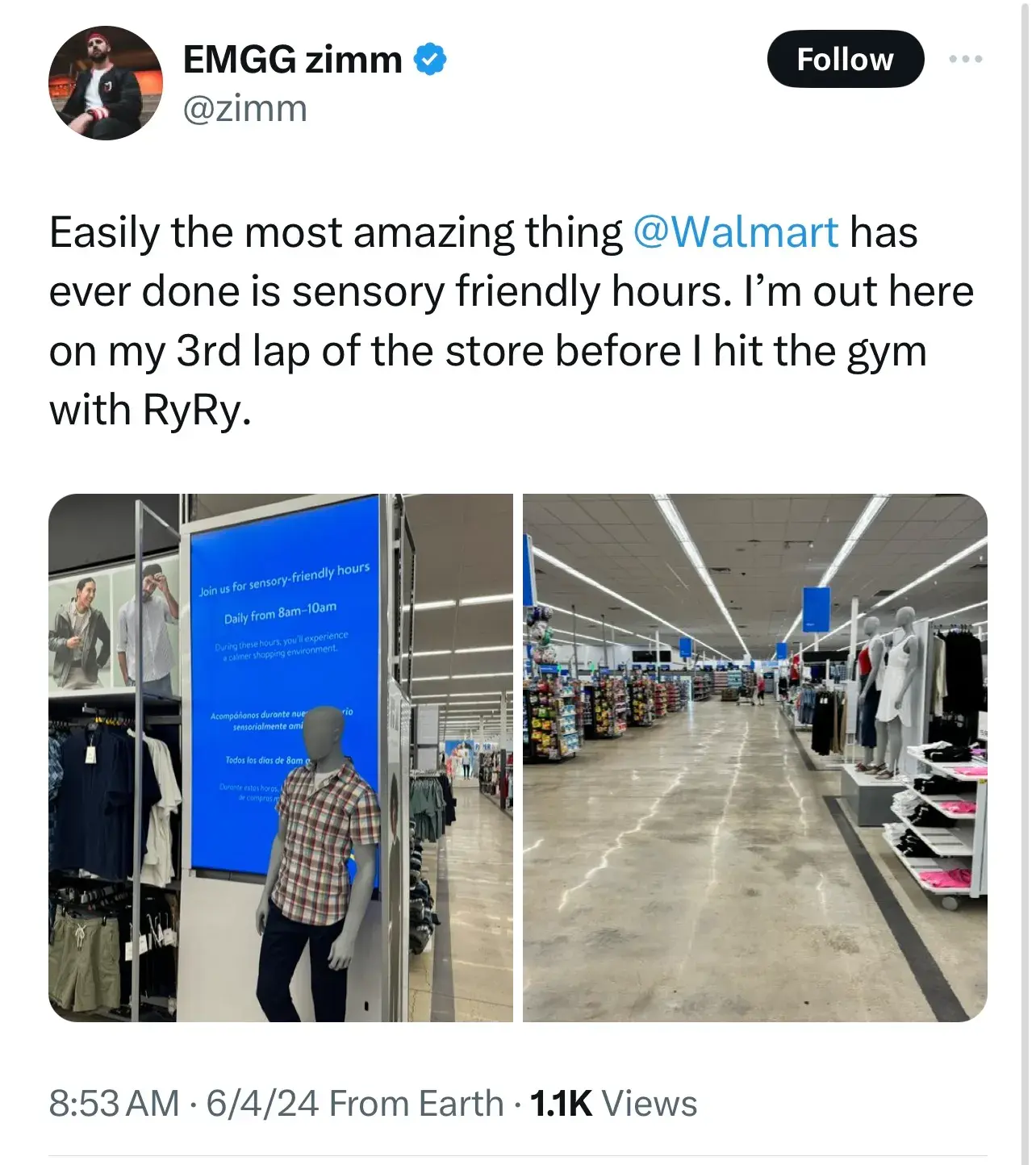
In this episode of the Inclusion & Marketing podcast, I sat down with three experts who are all neurodivergent. They shared their experiences and practical advice for brands who want to ensure neurodivergent consumers and caregivers feel like they belong with your brand.
2. Lululemon Expands to Serve Consumers Who Wear Larger Sizes
Back in September 2020, athleisure retailer Lululemon made a decision to invite people who wear larger sizes to be customers. The retailer did this by expanding their range of sizes offered to go beyond size 14, up to size 20.
In the two full years following the decision to be more size-inclusive, the brand posted the largest growth increases it had seen in eight years, at 42% and 30% respectively.
The average clothing size for a woman in the U.S. and Europe is 16. As such, by offering more sizes, Lulemon was able to acquire a new group of customers, who previously weren’t able to fit their clothes.
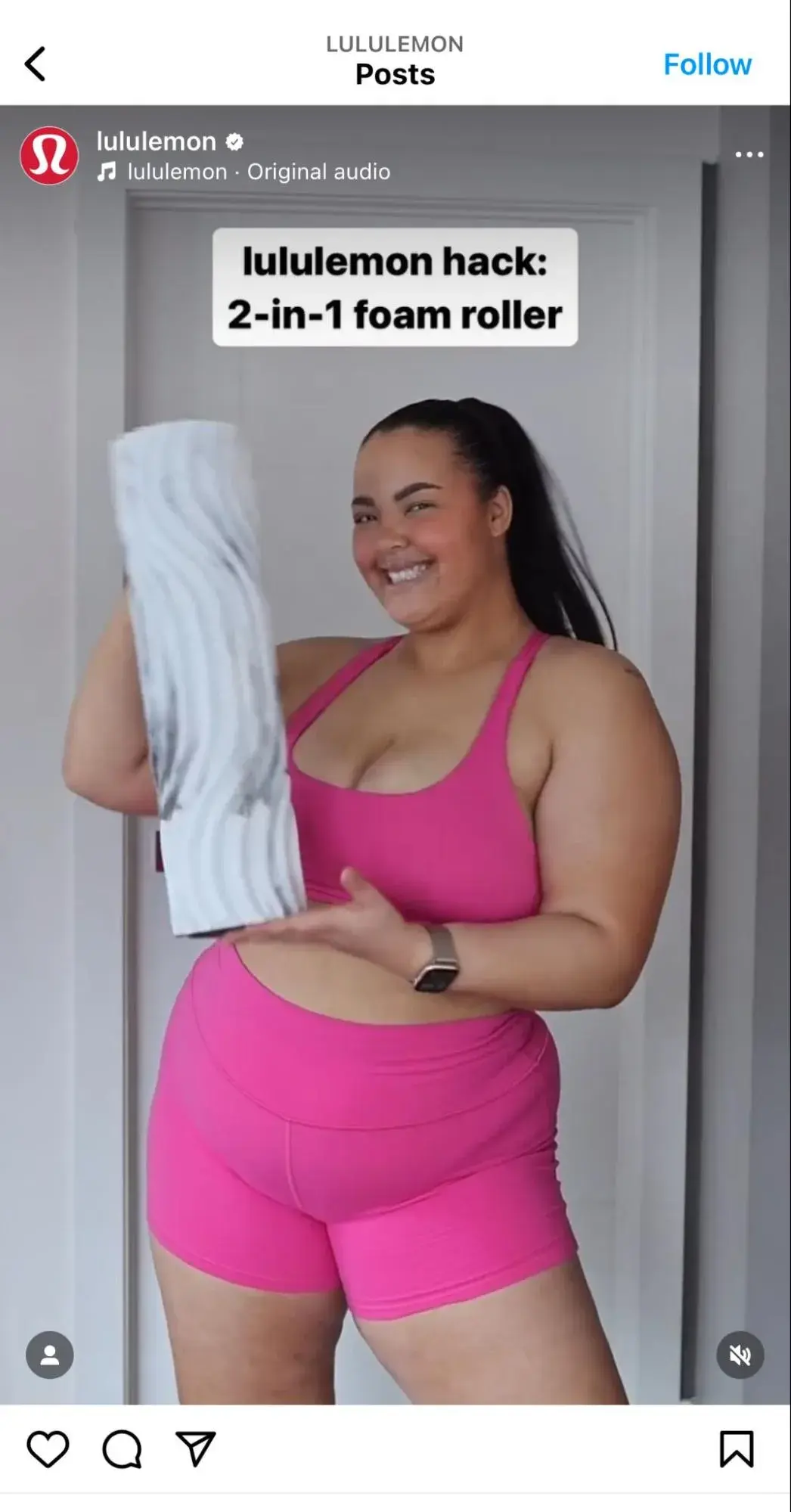
3. Fenty Beauty Extends Makeup Brush to Women of All Complexions
One of my favorite examples of a brand that has acquired a broad diversity of consumers with inclusion is Fenty Beauty.
Rihanna’s brand launched in 2017 with 40 shades of foundation to be inclusive of people of all complexions who want to wear makeup. The unprecedented launch broke many sales records in its early days, with many shades for both darker and lighter complexions selling out.
After seeing the response to consumers who wore “less common” shades of foundation being invited to be customers of Fenty Beauty, other make-up brands adjusted their approach and started offering 40 shades of makeup as well.
Being inclusive became the standard for any brand that wanted to acquire new customers on a consistent basis.
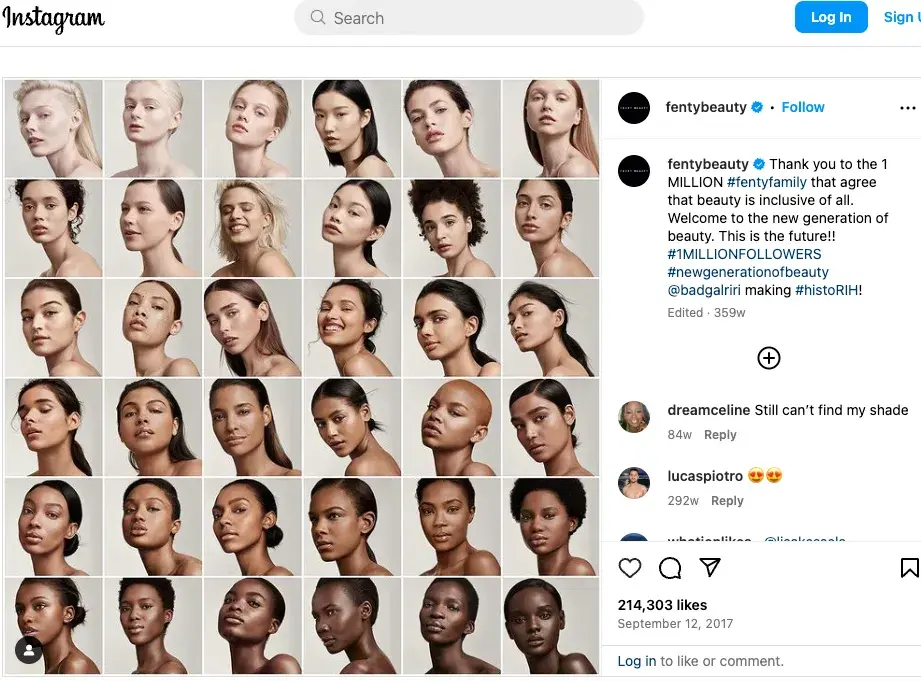
4. VidIQ Reaches Out to Spanish-Speaking Consumers
Software company VidIQ decided to invite Spanish-speaking YouTubers to become their customers by making educational videos in Spanish for the community.
The U.S. has the second largest population of Spanish speakers in the world (behind Mexico), and it is the second most spoken native language in the world (behind Mandarin).
Creators who prefer to learn and use tools in Spanish can do so as VidIQ makes an intentional effort to make its existing tools available in Spanish.
This image shows a Spanish language video on the brand’s Spanish language channel, highlighting how consumers can access the VidIQ Academy with Spanish subtitles, as well as how to adjust the software’s settings to work in Spanish.
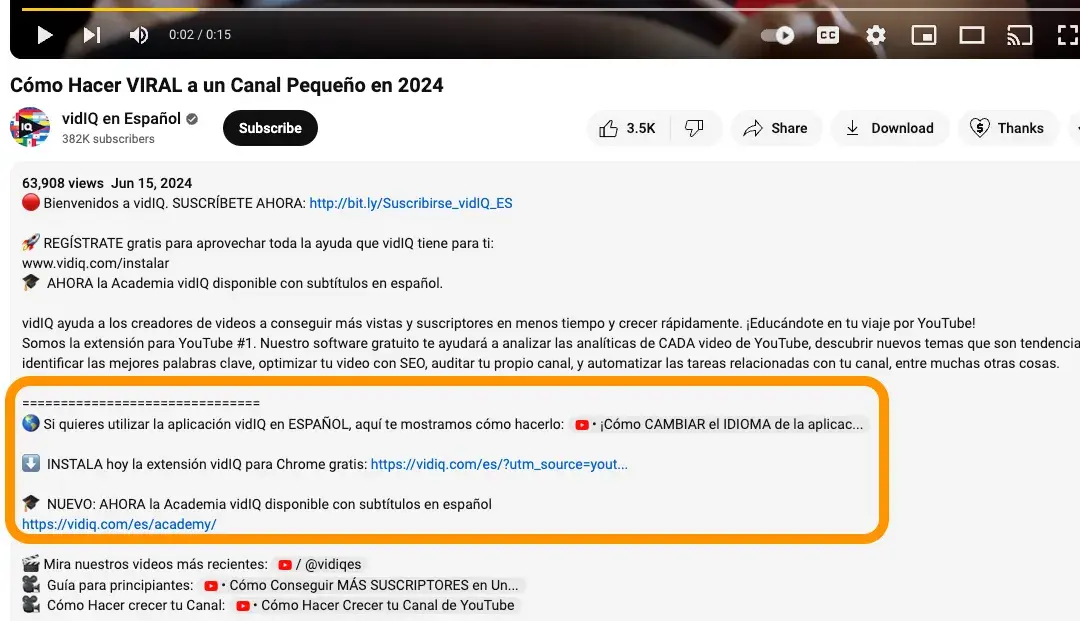
5. KitKit Shows Muslim Consumers They See Them
The KitKat Canada team invited the Muslim community to be their customers. The brand introduced the KitKat Iftar bar — thirty KitKats people can use to break their fast each day while observing Ramadan.
By designing the bar specifically for Ramadan, the brand made it clear that it sees the Muslim community in a way that many other brands do not. As such, the brand can acquire new customers during Ramadan that can later convert to loyal customers all year long.
6. Mattel Adapts Games to be Colorblind Accessible
Toymaker Mattel leaned into inviting people who are colorblind and or visually impaired to be their customer.
The toymaker declared that by year-end 2024, 80% of the games in its extensive catalog, including Uno, Tumblin’ Monkeys, and Blokus will be colorblind accessible. The brand stated that percentage will move to 90% by year-end 2025.
Mattel recognized that being blind or colorblind doesn’t diminish a person’s desire to enjoy playing games with family and friends. As a result, the brand collaborated with experts in color deficiency and co-created with people who experience color blindness to create solutions that work for a broader group of consumers.
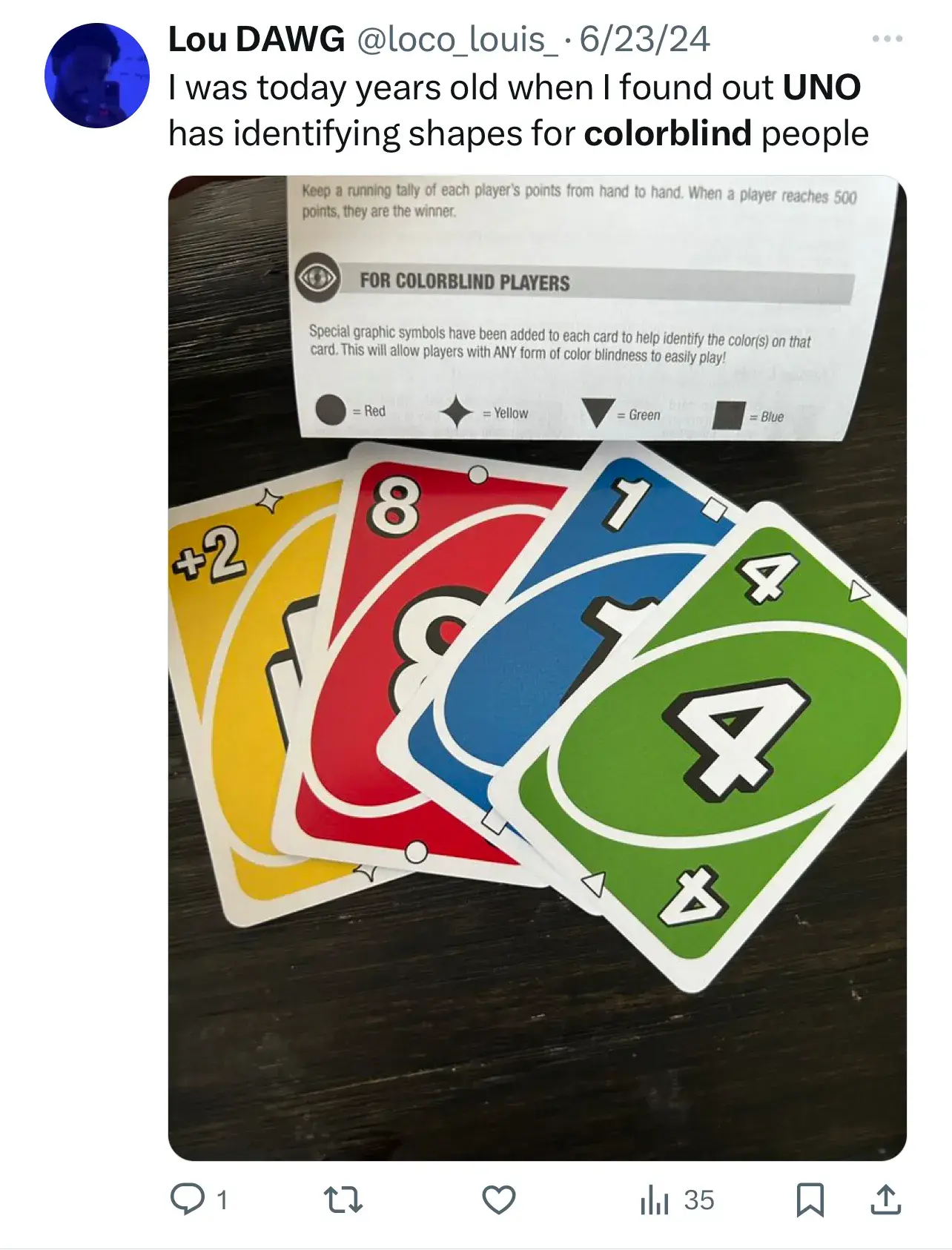
This episode of the Inclusion & Marketing podcast summarizes lessons learned from an interview with Google’s Chief Brand Accessibility Officer, on how the brand approaches accessibility.
7. MasterCard Solves a Real Problem for Transgender Cardholders
MasterCard invited transgender people to be their customers by solving a real need they had when it came time to buy something. If a transgender or non-binary consumer looks different from what the name on their card says, it often puts them in an uncomfortable position when making a purchase.
Solving real problems for people from underrepresented and underserved communities makes it easier for them to choose you.
In this episode of the Inclusion & Marketing podcast, I sat down with an LGBTQ+ expert who shared lots of wonderful insights on how to build an LGBTQ+ inclusive brand.
It’s Time to Invite More People to be Your Customer
Acquiring customers from underrepresented and underserved communities requires intentionality with your products, marketing, policies, and communications.
Make it clear to the people you want to serve that you see them, support them, and have designed an environment that makes them feel like they belong with you.
Once you do, not only will you acquire more people from those communities, but you’ll earn their loyalty as well.
from Marketing https://blog.hubspot.com/marketing/inclusion-customer-acquisition
Welcome to Creator Columns, where we bring expert HubSpot Creator voices to the Blogs that inspire and help you grow better.
I’m the founder of an inclusive marketing strategy consultancy. As I’ve worked with clients of various sizes across industries over the years, I’ve observed that many marketers and business leaders still don’t fully understand the business benefit of inclusive marketing.
Smart brands engage in inclusive marketing because they know it helps them make a bigger impact on a broader audience while increasing sales.
While most marketers wouldn’t intentionally exclude consumers, not excluding is not the same as actively including. True inclusion, and the ability to consistently acquire new customers from underrepresented and underserved communities requires intention.
Why Smart Brands Invite Consumers With Varying Identities to be Their Customers
To illustrate, imagine you want to be friends with a new group of people, so you decide to throw a party. A good host wouldn’t just put a sign out that says “Hey, everybody come to my party.” A savvy host would actively spread the word so the new group knows they are invited.
Smart hosts who want to welcome a specific group of people ensure they get a direct invitation to the party.
And then, effective hosts ensure all the details and experience of the party are well planned out, to ensure that when the group you wanted to attend arrives at your party, they have such a wonderful time they don’t want to leave and are excited about attending the next one.
This free How to Build a Brand kit from HubSpot will help you with resources you need to create a brand that makes more of the people you serve feel like they belong with you, and crave attending more of your “brand parties.”
There are many ways brands can go about acquiring new customers. However, when it comes to consumers from underrepresented and underserved communities, I often need to remind my clients that it isn’t enough just to communicate “you are welcome here.”
Brands must intentionally invite people from these communities to be their customers because they have long been ignored and underserved by brands.
Consumers from marginalized communities are often skeptical of brands’ intentions, particularly those who suddenly start to engage after ignoring them for so long.
These consumers don’t know if a brand’s efforts are genuine, opportunistic, or short-lived, so they often keep their distance until they know that a brand is committed to serving and supporting their community
As such, as brands are working to acquire consumers from underrepresented and underserved communities, it is necessary to invite them in a manner that makes them feel seen, supported, and like they belong with you.
Here are some examples of how brands have leaned into inclusive marketing as a customer acquisition strategy for specific identities they want to serve.
Examples of Brands Leaning Into Inclusive Marketing as a Customer Acquisition Strategy
1. Walmart Supports Neurodivergent Consumers
In 2023, after listening to feedback from both customers and team members, Walmart decided to implement sensory-friendly hours each day from 8-10 AM in all their stores across the United States and Puerto Rico.
During this time frame, stores dim the lights, lower the music, and program static images on television screens, to offer a less stimulating environment.
Data shows that sensory processing disorder (SPD) impacts between 5-16% of school-aged children in the U.S. and about 20% of the world’s population. SPD is commonly seen in people with attention deficit hyperactivity disorder (ADHD), Autism, and post-traumatic stress disorder (PTSD).
Because Walmart has taken the time to “see” consumers who have a need for a lower-stimulating shopping environment, the brand removed barriers that prevented consumers and caregivers of people with SPD from shopping in its stores and invited them in.

In this episode of the Inclusion & Marketing podcast, I sat down with three experts who are all neurodivergent. They shared their experiences and practical advice for brands who want to ensure neurodivergent consumers and caregivers feel like they belong with your brand.
2. Lululemon Expands to Serve Consumers Who Wear Larger Sizes
Back in September 2020, athleisure retailer Lululemon made a decision to invite people who wear larger sizes to be customers. The retailer did this by expanding their range of sizes offered to go beyond size 14, up to size 20.
In the two full years following the decision to be more size-inclusive, the brand posted the largest growth increases it had seen in eight years, at 42% and 30% respectively.
The average clothing size for a woman in the U.S. and Europe is 16. As such, by offering more sizes, Lulemon was able to acquire a new group of customers, who previously weren’t able to fit their clothes.

3. Fenty Beauty Extends Makeup Brush to Women of All Complexions
One of my favorite examples of a brand that has acquired a broad diversity of consumers with inclusion is Fenty Beauty.
Rihanna’s brand launched in 2017 with 40 shades of foundation to be inclusive of people of all complexions who want to wear makeup. The unprecedented launch broke many sales records in its early days, with many shades for both darker and lighter complexions selling out.
After seeing the response to consumers who wore “less common” shades of foundation being invited to be customers of Fenty Beauty, other make-up brands adjusted their approach and started offering 40 shades of makeup as well.
Being inclusive became the standard for any brand that wanted to acquire new customers on a consistent basis.

4. VidIQ Reaches Out to Spanish-Speaking Consumers
Software company VidIQ decided to invite Spanish-speaking YouTubers to become their customers by making educational videos in Spanish for the community.
The U.S. has the second largest population of Spanish speakers in the world (behind Mexico), and it is the second most spoken native language in the world (behind Mandarin).
Creators who prefer to learn and use tools in Spanish can do so as VidIQ makes an intentional effort to make its existing tools available in Spanish.
This image shows a Spanish language video on the brand’s Spanish language channel, highlighting how consumers can access the VidIQ Academy with Spanish subtitles, as well as how to adjust the software’s settings to work in Spanish.

5. KitKit Shows Muslim Consumers They See Them
The KitKat Canada team invited the Muslim community to be their customers. The brand introduced the KitKat Iftar bar — thirty KitKats people can use to break their fast each day while observing Ramadan.
By designing the bar specifically for Ramadan, the brand made it clear that it sees the Muslim community in a way that many other brands do not. As such, the brand can acquire new customers during Ramadan that can later convert to loyal customers all year long.
6. Mattel Adapts Games to be Colorblind Accessible
Toymaker Mattel leaned into inviting people who are colorblind and or visually impaired to be their customer.
The toymaker declared that by year-end 2024, 80% of the games in its extensive catalog, including Uno, Tumblin’ Monkeys, and Blokus will be colorblind accessible. The brand stated that percentage will move to 90% by year-end 2025.
Mattel recognized that being blind or colorblind doesn’t diminish a person’s desire to enjoy playing games with family and friends. As a result, the brand collaborated with experts in color deficiency and co-created with people who experience color blindness to create solutions that work for a broader group of consumers.

This episode of the Inclusion & Marketing podcast summarizes lessons learned from an interview with Google’s Chief Brand Accessibility Officer, on how the brand approaches accessibility.
7. MasterCard Solves a Real Problem for Transgender Cardholders
MasterCard invited transgender people to be their customers by solving a real need they had when it came time to buy something. If a transgender or non-binary consumer looks different from what the name on their card says, it often puts them in an uncomfortable position when making a purchase.
Solving real problems for people from underrepresented and underserved communities makes it easier for them to choose you.
In this episode of the Inclusion & Marketing podcast, I sat down with an LGBTQ+ expert who shared lots of wonderful insights on how to build an LGBTQ+ inclusive brand.
It’s Time to Invite More People to be Your Customer
Acquiring customers from underrepresented and underserved communities requires intentionality with your products, marketing, policies, and communications.
Make it clear to the people you want to serve that you see them, support them, and have designed an environment that makes them feel like they belong with you.
Once you do, not only will you acquire more people from those communities, but you’ll earn their loyalty as well.
![Free Kit: How to Build a Brand [Download Now]](https://no-cache.hubspot.com/cta/default/53/814dd420-0d49-40e0-b59c-f01066e186c1.png)
No hay comentarios:
Publicar un comentario